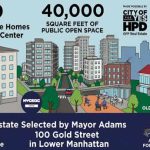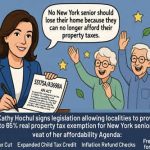
Unlocking Business Potential in Downtown Brooklyn: A Thriving Hub for Commerce and Culture
While Downtown Brooklyn lies toward the western part of the borough, it is not generally grouped under the “West Brooklyn” label. It functions as a self-contained hub within Brooklyn, with strong ties to neighboring areas like Brooklyn Heights and DUMBO, and serves as the core of the borough’s economic and administrative activity.
Downtown Brooklyn, NY, has transformed from a historic civic center into one of the city’s most dynamic business districts. This bustling neighborhood, framed by Flatbush Avenue, Fulton Street, and the Brooklyn Bridge, offers unmatched opportunities for businesses and investors. With an ideal blend of commerce, culture, and infrastructure, Downtown Brooklyn is a magnet for large corporations, small businesses, and startups alike.
A Strategic Location with Global Appeal
Located at the nexus of Brooklyn and Manhattan, Downtown Brooklyn’s proximity to major transportation routes makes it an ideal location for businesses. The area is well-served by 13 subway lines, multiple bus routes, and ferry access, providing seamless connectivity to New York City’s business ecosystem. Just minutes from the Brooklyn Bridge and Manhattan, the neighborhood offers excellent access to Wall Street and Midtown, making it a prime location for businesses aiming to serve New York’s financial heart.
Business Powerhouses and Growth Drivers
Several industry leaders and corporate giants have made Downtown Brooklyn their base. Companies such as JPMorgan Chase, National Grid, and Slate Media Group operate in the area, drawn by its accessibility and commercial infrastructure. The Brooklyn Tech Triangle—linking Downtown Brooklyn with DUMBO and the Brooklyn Navy Yard—has turned the neighborhood into a tech and innovation hub, attracting startups, digital agencies, and creative firms.
This surge in business activity has also fostered the growth of co-working spaces, including Industrious and WeWork, giving entrepreneurs and remote workers flexible office solutions within a vibrant urban setting.
Avenue Highlights and Retail Renaissance
The heart of Downtown Brooklyn revolves around Fulton Street Mall, an open-air retail corridor featuring a mix of global brands, such as H&M, Macy’s, and Foot Locker, alongside smaller local boutiques. A major draw for shoppers, Fulton Street continues to evolve with high-end stores and trendy eateries. The City Point development, located nearby, has become a focal point for both commerce and entertainment, boasting retailers like Target, Trader Joe’s, and Alamo Drafthouse Cinema.
Venture further down Flatbush Avenue Extension, and you’ll discover the intersection of modern office towers and historical landmarks. The recently renovated Brooklyn Academy of Music (BAM) and the Barclays Center, home to the Brooklyn Nets and numerous concerts, make the area a cultural powerhouse that draws millions of visitors annually. These venues not only boost tourism but also create opportunities for businesses in hospitality, retail, and services.
Real Estate Boom and Residential Appeal
Downtown Brooklyn is not just about business—it’s becoming a sought-after residential area too. Luxury developments like The Hub and Brooklyn Point offer high-rise living with scenic skyline views, attracting young professionals and families. The population influx is fueling demand for restaurants, coffee shops, gyms, and other lifestyle businesses.
Additionally, initiatives like the Downtown Brooklyn Partnership have accelerated urban development, fostering public-private collaborations that enhance the area’s walkability, green spaces, and public amenities.
Why Invest in Downtown Brooklyn?
- Booming Tech Sector: Proximity to the Brooklyn Tech Triangle attracts entrepreneurs, digital firms, and venture capital.
- Unrivaled Connectivity: Direct access to Manhattan and multiple transportation options make it a prime location for commuting professionals.
- Diverse Customer Base: The blend of office workers, residents, and tourists creates a year-round demand for services and retail.
- Development-Friendly Policies: Public-private partnerships encourage investment and offer incentives for businesses to grow in the area.
With its vibrant mix of business, culture, and community, Downtown Brooklyn is emerging as a key economic driver in New York City. The neighborhood’s steady growth in retail, real estate, and tech reflects its potential as a long-term hub for business innovation and development. Whether you’re a startup looking for office space, a retailer targeting affluent consumers, or an investor eyeing prime real estate, Downtown Brooklyn offers unparalleled opportunities.
Now is the time to explore what this thriving urban center has to offer—because the future of business in New York may very well be in Brooklyn.
–
Here is a list of key streets, avenues, and neighborhoods within and adjacent to Downtown Brooklyn, offering insight into the layout of the area and its major hubs for business, culture, and commerce.
Major Streets and Avenues in Downtown Brooklyn
- Flatbush Avenue
- Connects Downtown Brooklyn to Prospect Park, running through Fulton Street and passing major sites like Barclays Center and City Point.
- Key commercial area with retail stores, banks, and restaurants.
- Fulton Street
- Home to the Fulton Street Mall, a pedestrian-friendly shopping corridor lined with popular stores like Macy’s, H&M, and Foot Locker.
- Runs from Fort Greene through Downtown Brooklyn and toward the Brooklyn Bridge.
- Court Street
- A busy stretch with banks, law offices, cafes, and residential buildings.
- Close to Borough Hall and the New York State Supreme Court, making it a legal hub.
- Adams Street / Boerum Place
- A key connection between Brooklyn Bridge and Downtown Brooklyn, offering quick access to Manhattan.
- Hosts government offices, including the Brooklyn Borough Hall.
- Jay Street
- Known for its proximity to MetroTech Center, a major business and academic complex.
- Home to office spaces, tech firms, and educational institutions like NYU Tandon School of Engineering.
- Livingston Street
- Runs parallel to Fulton Street and is lined with commercial spaces, including fitness centers and discount retailers.
- Schermerhorn Street
- A mix of residential and retail developments, connecting to cultural institutions such as the Brooklyn Academy of Music (BAM).
- Atlantic Avenue
- A major commercial street dividing Downtown Brooklyn and Boerum Hill, with retail shops, bars, and restaurants.
- Extends west toward Cobble Hill and east toward Bedford-Stuyvesant.
- Willoughby Street
- Located near City Point and MetroTech, with a mix of office spaces, food courts, and boutique hotels.
Neighborhoods Around Downtown Brooklyn
- Fort Greene
- Located to the north, it features leafy parks, historic brownstones, and cultural landmarks like the Brooklyn Academy of Music (BAM).
- Boerum Hill
- South of Downtown Brooklyn, known for its boutique stores, restaurants, and brownstone-lined streets.
- Brooklyn Heights
- West of Downtown, offering scenic views of the Manhattan skyline, upscale homes, and the Brooklyn Heights Promenade.
- Also home to numerous law offices due to its proximity to Borough Hall and courts.
- DUMBO (Down Under the Manhattan Bridge Overpass)
- Northeast of Downtown Brooklyn, this neighborhood has become a tech hub and tourist hotspot, known for cobblestone streets and waterfront views.
- Cobble Hill
- Located southwest of Downtown Brooklyn, this area features trendy cafes, independent shops, and a mix of families and professionals.
- Vinegar Hill
- A small, historic neighborhood northeast of Downtown, adjacent to DUMBO, offering a quieter, residential atmosphere.
- Barclays Center / Prospect Heights
- East of Downtown Brooklyn, this area is centered around the Barclays Center arena, a venue for sports and entertainment events.
Downtown Brooklyn’s streets and avenues—such as Flatbush Avenue, Fulton Street, and Court Street—serve as the lifeblood of the area, connecting businesses, residents, and tourists to key neighborhoods like Brooklyn Heights, Fort Greene, and Boerum Hill. These streets reflect the diversity of Downtown Brooklyn, blending retail, legal offices, tech hubs, and cultural institutions. With each thoroughfare contributing to the district’s identity, Downtown Brooklyn continues to thrive as a premier destination for commerce, living, and tourism in New York City.
Downtown Brooklyn, New York






